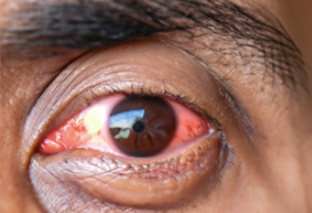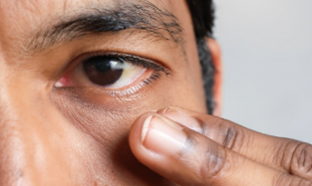
Conjunctivitis
Conjunctivitis, sometimes called "pink eye" or “eye-flu”, is inflammation of the conjunctiva (the lining of the eyelids). It is usually viral, although bacteria can be responsible.

Transmission
Infectious conjunctivitis is spread from person to person.
You get infected if you touch your eyes upon:
- Contact with an infected person.
- Contact with contaminated surface or infected objects such as towels or make up.

Symptoms
Symptoms are usually mild.
- Eyes become red or pink, and they may be itchy and sticky.
- There may be a discharge, which can be clear or form a yellow crust.
- Vision may be blurry, and the eyes may become more sensitive to light.
- Sometimes conjunctivitis is associated with a cold or sore throat fever. Rarely, the cornea (clear central part of the eye) can be involved.
Treatment
Symptoms usually resolve by themselves in about four days to a week.
- Use cold compresses on eye.
- Antibiotic eye drops or ointment as prescribed by your physician. Avoid self-treatment or home remedies.
- Avoid rubbing the eye.
- Do not use contact lenses. Consider wearing dark glasses if eyes are sensitive to light.
- Contact your doctor if you experience pain, blurring of vision or symptoms become severe.
Prevention
- Strict attention to hygiene prevents infection and reduces the chances that an infected person will pass the illness to others.
- Avoid close contact with anyone who is infected.
- Wash your hands thoroughly and frequently.
- Refrain from touching your eyes.
- Don't share personal hygiene / grooming items such as wash cloths or eye make-up.
- Children who are infected should be kept out of school or day care until they have recovered.

Click the button to download the poster.
Disclaimer
This information has been developed for educational purposes only. It is not a substitute for professional medical advice. Should you have questions or concerns about any topic described here, please consult your healthcare professional.
HEALTH INFORMATION – Conjunctivitis
© 2023 AEA International Holdings Pte. Ltd. All rights reserved. Unauthorised copy or distribution prohibited.